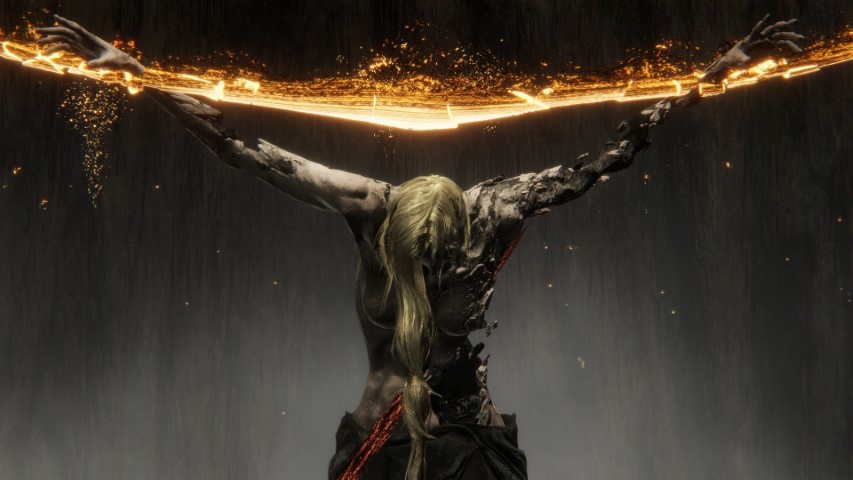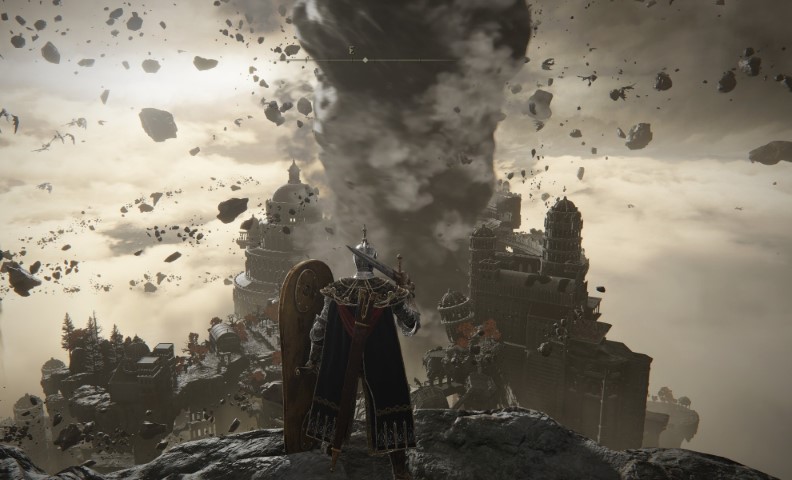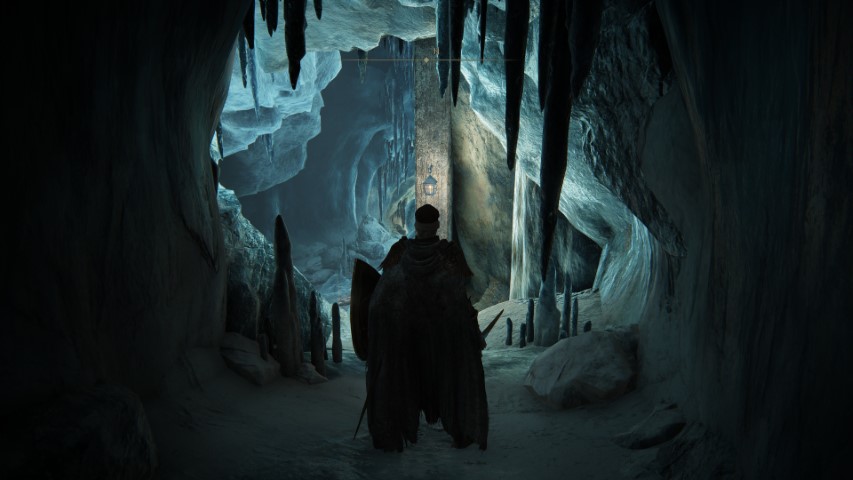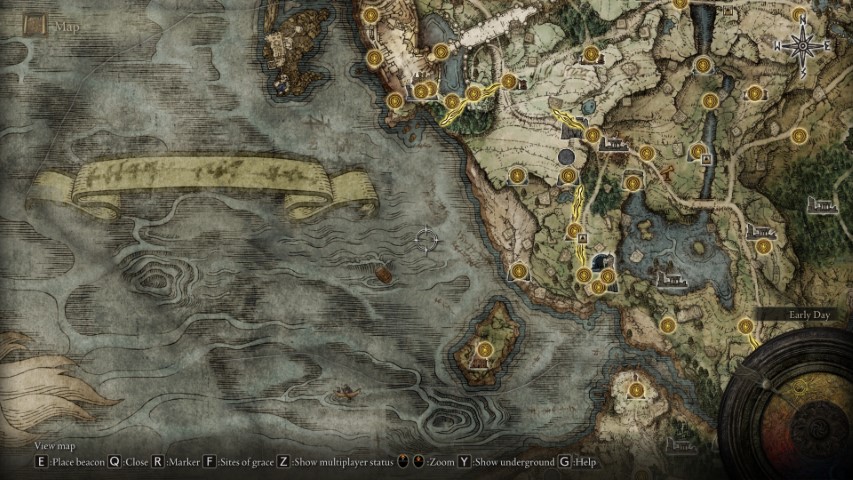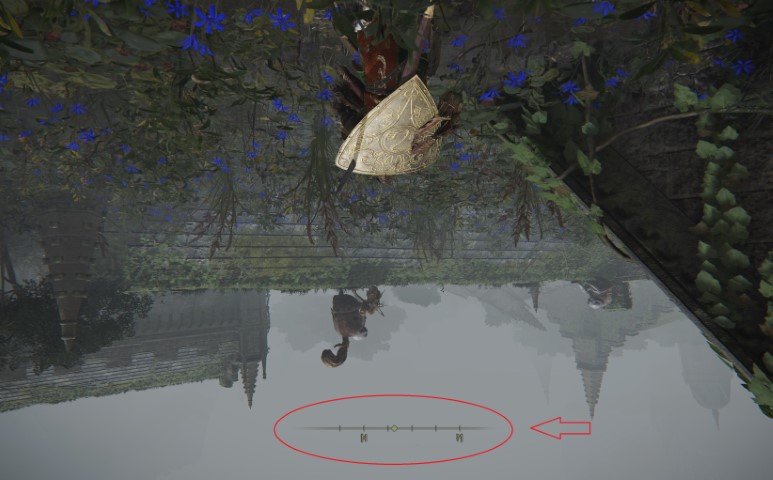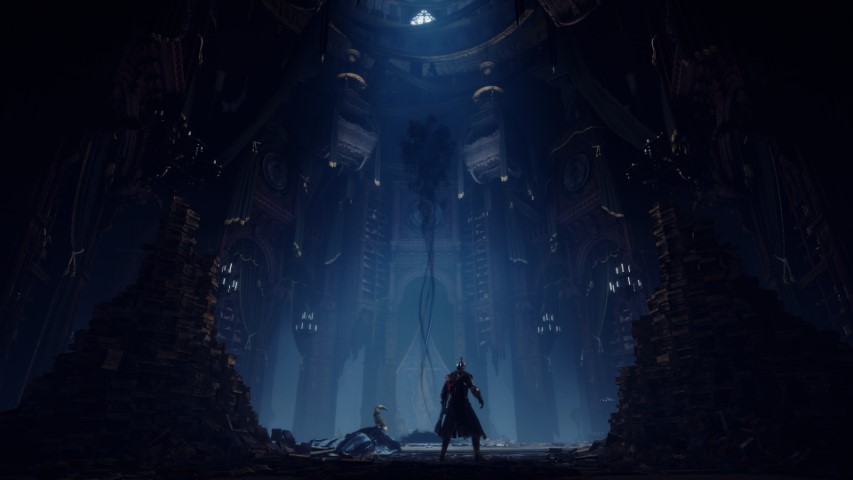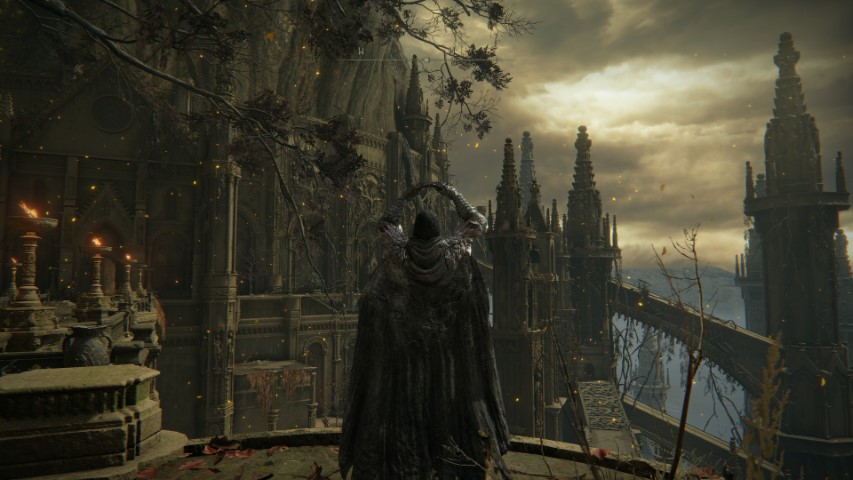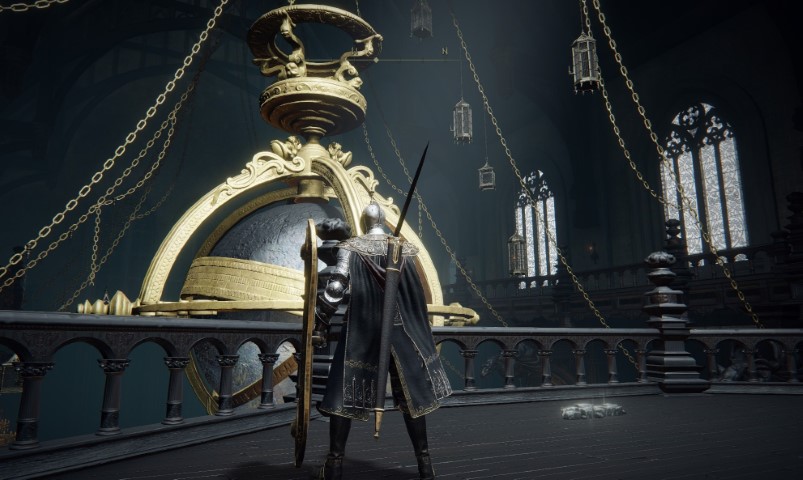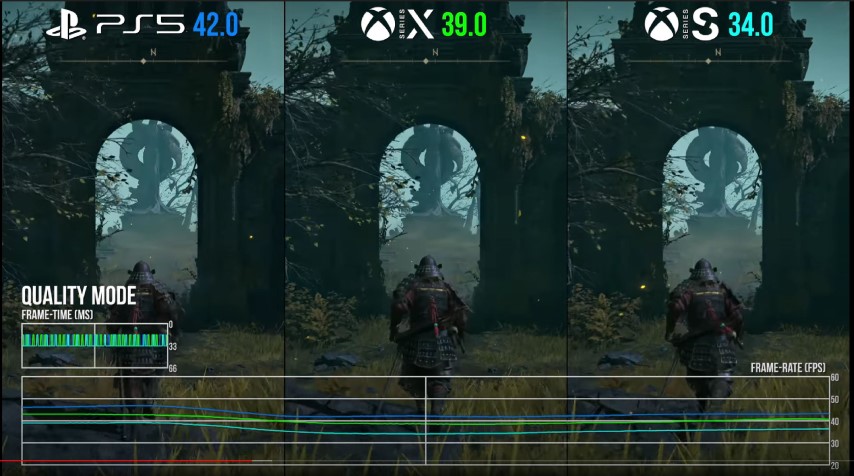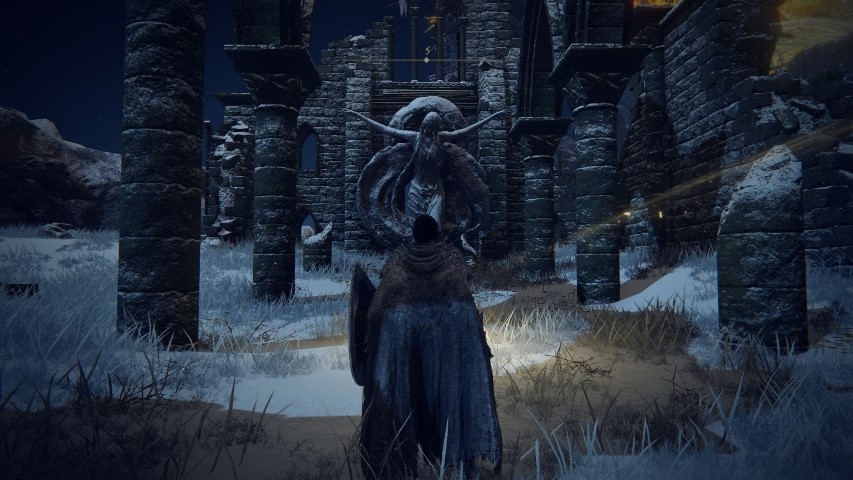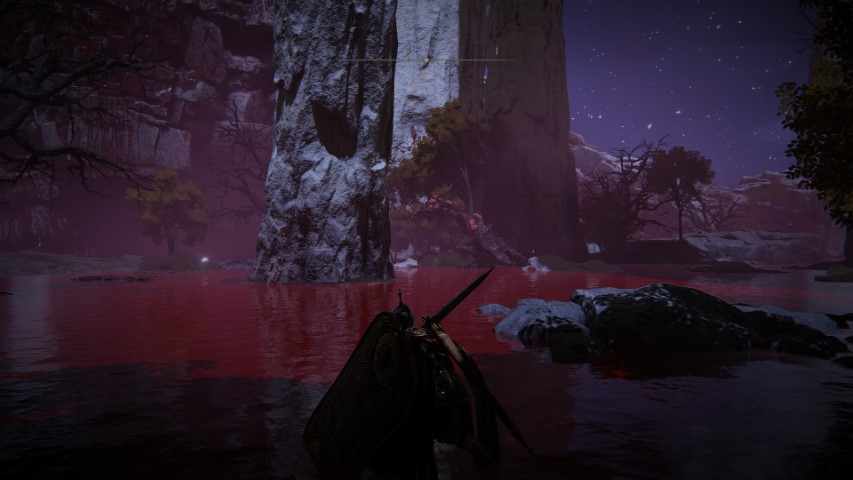
Elden Ring is From software’s latest game and their debut to the design of Open World games. They managed to once again achieve critical and fan acclaim and it would be really cool if we analyzed some of the things Elden Ring gets right and also acknowledge some of its faults… because even classics are not above critique.
This will be a multi-part series because of how long the game is and how deep it can be.
What it gets right: Elden Ring has mastered the sense of discovery.
One of the most underrated parts of a good video game is the sense of discovery, the awe of just moving around and traversing the world itself, finding interesting lore and amazing vistas. We humans are naturally curious creatures – the very act of navigating a world is inherently interesting and satisfying to us. Many modern games have good world design, but few have the final little thing that is what brings a world from just good to downright great – a sense of organic discovery.
This is where Elden Ring is absolutely top tier. I will try to not spoil anything, but going in mostly blind to this game there were times where I was downright amazed at what the level designers have managed to achieve here. Let’s just say that the world is far, far bigger than how it may seem, more interlinked than expected and all of this is hidden really well. Elevators, secret ledges, illusionary walls, teleporters and even more … shall we say unorthodox ways of travel can be experienced in the Lands Between!
I haven’t felt this in a long while. I think the last game that truly made me say “This is incredible!” is perhaps Valheim. It isn’t the bosses or the power fantasy that fueled me, it was just the primal feeling that all humans have, this “I wonder what is over there?” or “OK I found more… I must keep on pushing.” feeling and it is glorious. I don’t even know what I am doing half the time and I felt like an explorer entering forbidden lands, dangerous passages, finding extinct civilizations and alien creatures every like 10 minutes. The gorgeous art design and music just sealed the deal. Elden Ring is just built different here and the only thing stopping me from going into detail is that I want you to experience it yourselves. Do not look at guides or online maps, bar maybe if its for an area you already explored – explore on your own and do indeed try to see all that you can. Trust me – this is one of the game’s pinnacles for sure.
I will push deeper… I must… I cannot stop myself, even in this icy tomb the human spirit and curiosity shan’t be denied!
But how does Elden Ring do this? What is their secret? Is this some brand new and never before seen game design paradigm? Nope.
I have no idea where I am, no idea where the map is… and this is exciting!
Part of why it succeeds is actually quite simple – the game’s map starts off without a lot of information on it. In fact, it is just a grey mist with a few markings on it. You need to physically find the item for the map in the open world to even see it for the current region. Thankfully this isn’t too hard usually – when entering a new area, the approximate location of the physical map is marked in some manner. But there are locations where this is not actually the case – you have no idea where it is. And even when you do know where it should be actually getting there will be an adventure of its own. So, the first 15 minutes or even hour in a new zone, all you have is your eyes and ears and landmarks to navigate and it works!
When you even have a map, it doesn’t immediately give you all points of interest or sites of grace or merchants on it. You need to find them, to physically explore to find these locations. Now, you can infer a lot from just looking at the map once you find it, but not everything. And that is the point – you are attentive! Not following a marker given to you by the game designer Gods, you saw what might be a cool looking building on the map or in the distance and you found it alone!
That classic fantasy old-timey feel <3 !
Another thing From decided was to make sure the map was made in the slightly imperfect “hand drawn” manner. Not only does this give the world a bit more charm but it is also quite the devious little tool. The map actually has a small handful of mistakes on it. Locations which aren’t exactly where they appear to be or are missing. It has limits. It plays with detail a bit. Just enough to get you paranoid and pay more attention to the world without damaging its overall usefulness. Very, very clever.
The compass is one really good design choice too – no need for a mini-map when you have this!
Not having a mini-map is also a great choice. Instead of looking at the map and literally moving according to it as is possible in many open-world games, you actually need to look at the game’s environment and the compass at the top. Of course, you can set up way points too!
Finally, the game is just dense with detail and this literally cannot be shown on a 2-dimensional map. Combined with the strong enemies and the relatively sparse markings on the map you will need to remember more of the layout of the land overall or manually mark it.
What it gets wrong: Elden Ring is technologically extremely poor
This is wallpaper worthy!
This is in my personal opinion From Software’s single biggest problem.
Before I explain I need to clear up a few things. The game is beautiful. It is an artistic masterpiece and the artists in charge of the design for the levels, enemies, items and props – they did a fantastic job. Almost perfect and nigh peerless.
Art design is more important for a game’s looks than graphical fidelity. It is and always has been and always will be. But it is a subjective category. What I will refer to from now on is not art design. It is graphical fidelity. Objective, engineering quality things, like lighting, textures, models, special effects, ambient occlusion, etcetera.
Give the art designers a raise!
A game can be amazingly beautiful due to its art design and still be very poor, fidelity-wise. A game can be a godlike accomplishment of engineering, but also have soulless, bland art design and end up looking kinda ugly. These things are both possible.
Elden Ring suffers from the former. The game is basically only somewhat better than The Witcher 3 in terms of graphical fidelity, and that is a 2015 game. What Elden Ring has over it is a somewhat more advanced lighting engine and better texture quality. It does, however, have a smaller world (still huge!) and a lot fewer AI or NPCs active at a time.
Strong art, but this ambient occlusion is sub-2014 standards. AMD offers free, open-source replacement AO methods that are easy to use and crush this!
Now, this would not be an issue normally. Modern games are generally more than good looking enough, but in this case, Elden Ring has massive issues with its performance on both consoles and (especially) PC.
On even monstrous computers the game exhibits stutter. A part of it is due to DX12 Shader Compilation, a rookie mistake that many game developers fall victim to. This manifests as a small stutter or slowdown that impacts gameplay or cinematics and it happens any time that something new happens on screen. Every time a player uses a new weapon or a new spell, a new enemy appears… sometimes it can barely be felt but at other times it can lead to the player’s early demise. This also affects how cutscenes present themselves to the player – as long as they are in-engine ones, constant stutter on each and every scene transition will plague the experience and absolutely tank the game’s cinematics. Thankfully, if you go back and replay those scenes, it will be better – the CPU has made a shader cache for the game by then, but this is still a rookie mistake that impacts the most important impression of a product or game – the first impression.
The other stutter the game exhibits seems to be due to extremely poor memory management and affects all areas of the game. Extremely powerful CPUs and modern DDR5 RAM (overclocked!) with massive caches fixes this to a limited extent… but those should not be needed at all for this game. The Valve Steam Deck has work under the hood that helps here, but this should not be how a AAA game releases in 2022. Valve should not have to spend engineering time to other developer’s mistakes!
Do note – this is slightly better after the 1.04 patch. It is still not 60 though. Credit to Digital Foundry.
If one thinks consoles have it better – they’d be right but barely. While consoles don’t suffer from the same stutter that PC has, they also have issues with the game’s performance. New, relatively powerful machines are running a game with 2016 graphics at 30-60 fps with resolution drops. The much-maligned Cyberpunk 2077, with its new 1.5 patch, runs better than Elden Ring does on modern consoles, while looking *much* better graphically and with a bigger, denser world.
To add final insult to injury – the game is capped to 60 FPS and unlocking it via mods will disable certain online features. One thing I must clear up here is that there is no reason for this game to have a 60 FPS cap. It won’t make the hitboxes or collision detection or something function better. Games on smaller budgets with smaller teams have had collision detection just as good while juggling ballistic simulation and advanced artificial intelligence or destructible physics to boot… without resorting to locking framerate. This is not something the game “must have to be function”. This is absolutely an objective and silly downside. There is no getting around this and I only hope that From Software can do something to unlock frame rates or add good support for 120 or higher frame rate displays. This is literally *THE* game for it.
Mind you, Sekiro functioned just fine with the framerate unlocked with mods. So, this is probably not even an engine problem anymore. From Software, the relatively large AAA game developers just didn’t want to QA test this feature (since its still always a good idea to do that) and release the game properly. Something even modders working for free or indie devs can do on games with more complex technology at play…
Lakes of blood… not very original, but always cool!
I must give credit where it due, the recent patches have improved performance and fixed some of the bugs plaguing the game. The stutter is slightly less and the frame drops for no apparent reason at all are rarer. From Software are working on improvements – at a glacial speed. But at least in terms of high frame rate support, supporting other standard PC features, and optimization… they still have a long way to go. A very, very long way to go. And if we criticize Ubisoft games for optimization issues, it is only fair to critique this game too – it is technologically markedly worse than almost any and all modern AAA or AA games.
With just these two we finish part one of this long series. Elden Ring is an accomplishment of game design and it deserves a multi-part analysis. It is a great game so it deserves fair coverage – so that other game developers and modders learn the correct lessons!
The articles content, opinions, beliefs and viewpoints expressed in SAPPHIRE NATION are the authors’ own and do not necessarily represent official policy or position of SAPPHIRE Technology.






